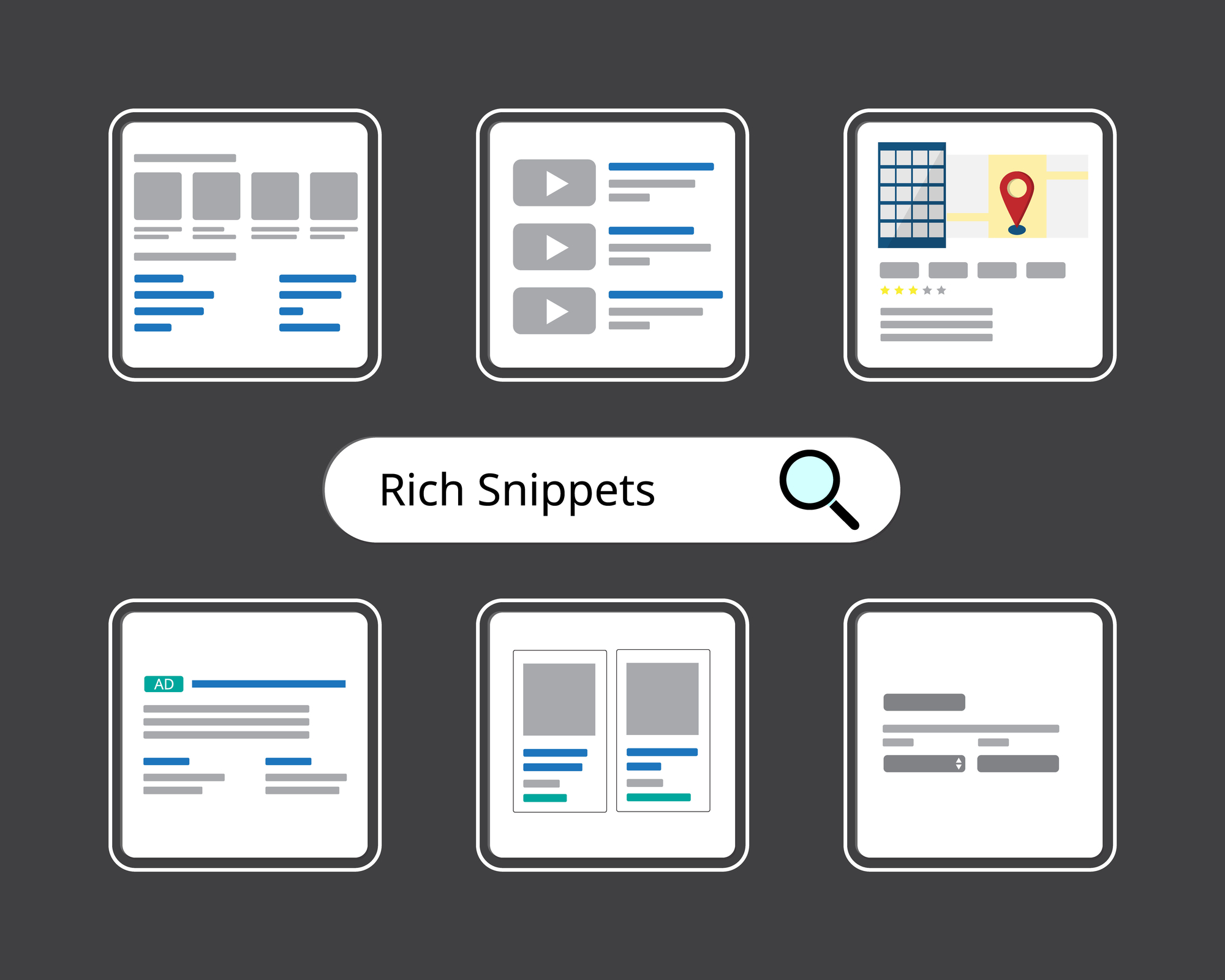Understanding Rich Snippets and Their Importance
When you’re browsing the internet for a new recipe or looking for a quick answer to a question, have you noticed how some search results stand out with star ratings, images, or additional information?
These enhanced results are known as rich snippets, and they play a crucial role in improving the visibility and click-through rates of your content on search engine results pages (SERPs).
Rich snippets provide a snapshot of the information users are searching for, making it easier for them to decide which link to click.
Rich snippets are generated from structured data, a standardized format for providing information about a page and classifying the page content. If you’re managing a website, implementing structured data is essential for communicating with search engines more effectively.
It’s not just about making your site look attractive in the SERPs; it’s also about providing clarity on the context of your content, which can significantly impact your SEO efforts.
The Role of Structured Data in Creating Rich Snippets
Structured data is the backbone of rich snippets. It’s a form of markup that you add to the HTML of your web pages, which speaks directly to search engines like Google, helping them understand the content of your pages.
This understanding allows search engines to display information in a more user-friendly manner. For instance, if you run a cooking blog, structured data can help display your recipes with star ratings, preparation time, and calorie counts directly in the search results.
There are various types of structured data formats, but the most commonly accepted and used is JSON-LD, which stands for JavaScript Object Notation for Linked Data.
It’s a script-based format that’s easy to implement and doesn’t interfere with the user-facing part of your website.
By using structured data, you’re not only enhancing the user experience but also improving your site’s communication with search engines, which can lead to better rankings.
Best Practices for Implementing Structured Data
Implementing structured data correctly is vital for the success of your rich snippets. Start by identifying the most relevant schema.org vocabulary for your content.
Schema.org provides a collection of shared vocabularies webmasters can use to mark up their pages in ways that can be understood by major search engines.
You’ll want to ensure that the structured data you add is accurate and reflects the content of your page. Misleading or incorrect markup can result in penalties from search engines.
It’s also important to keep your structured data up-to-date. If you make changes to your page content, your structured data should reflect those changes.
Regularly testing your markup using tools like Google’s Rich Results Test can help you catch any issues before they affect your search engine rankings. Remember, while structured data is for search engines, the ultimate goal is to enhance the experience for your users.

Types of Rich Snippets You Can Implement
There are various types of rich snippets, and the ones you choose to implement should align with the nature of your content.
- For example, if you’re in the e-commerce space, product snippets that display price, availability, and review ratings can be incredibly beneficial.
- If you’re a blogger, article snippets can showcase your headline, author, and publish date.
- Other types include event snippets, recipe snippets, and FAQ snippets, each providing specific details that cater to the content’s context.
Understanding the different types of rich snippets available allows you to tailor your structured data implementation to your website’s unique needs.
This customization not only improves the user experience but also enhances the relevance of your content in the eyes of search engines, potentially leading to higher rankings and increased traffic.
Common Challenges and How to Overcome Them
While the benefits of rich snippets are clear, implementing them can come with challenges.
One common issue is not seeing your rich snippets in the search results immediately after implementation.
It’s important to note that it can take time for search engines to crawl and index your updated pages.
Patience is key, and you can use tools like Google Search Console to monitor the progress of your structured data.
Another challenge is dealing with the ever-evolving guidelines and requirements set by search engines. Staying informed about updates to structured data policies is crucial to maintaining the effectiveness of your rich snippets.
Regularly reviewing your site’s markup and adapting to changes will help you avoid penalties and ensure your snippets continue to display correctly.



